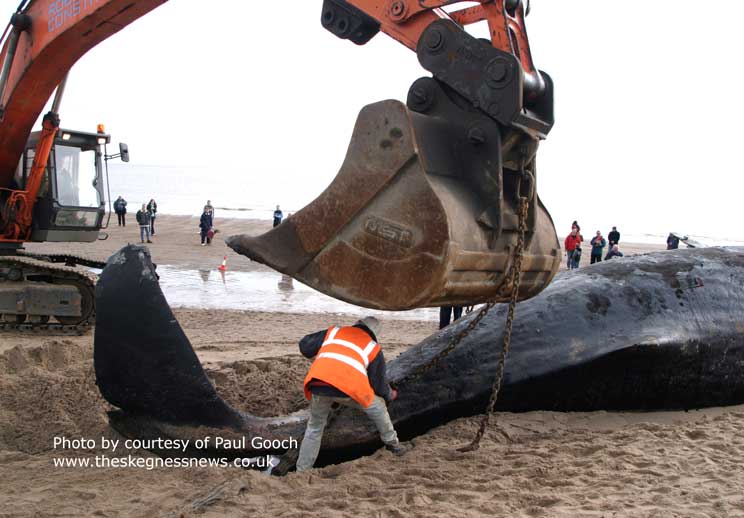



15
February 2006
Another
Sperm
Whale, Physeter catodon,
was spotted near North Shore Road, Skegness
(Lincolnshire) on the North Sea coast during the morning high tide. It
was clear that it was dead after the tide receded.
 |
 |
 |
 |
The Natural History Museum took photos and limited samples of two dead Sperm Whales, Physeter catodon, in the Wash. Paul Jepson visited the one at Skegness, quite decomposed, a male, 14 metres in length. This means at least four Sperm Whales have been washed up on the East Anglian coast of Britain in February 2006.
| The whale had to be disposed
of, removed and taken to a landfill site.
Photograph by Paul Gooch |
 |
The Sperm Whale, Physeter macrocephalus, is the largest species of toothed whale, reaching 18 metres (59 ft) and weighing 57 tonnes (male). This whale is capable of diving to a depth of more than 1000 metres and can remain submerged for over an hour. A fatty substance in the blood prevents dangerous nitrogen bubbles forming in their blood on deep dives, so they are able to descend to great depths, and return to the surface without decompression.
The
Sperm
Whale can be seen off the west coasts of Ireland
and Scotland, usually sighted alone. As they are a deep water species,
they are usually only observed from a boat. The large blunt head and forward
angled spout make the Sperm Whale one of the easiest species to identify.
However, because of its lengthy dives it is hard to spot.
4
February 2006
A
ten metre long Sperm Whale, Physeter
catodon, became stranded as
the tide receded on the Humber estuary mud off Kilnsea,
on Spurn Point,
East Yorkshire. It was first spotted alive at about 10:00
am blowing in the shallow water.
It quickly died as it was left clear of water on the low tide at 3:00
pm.
